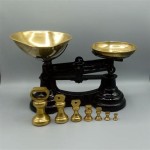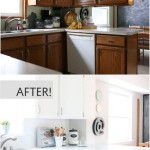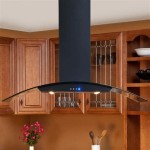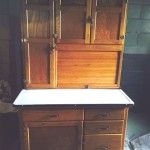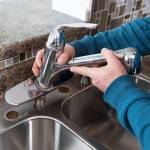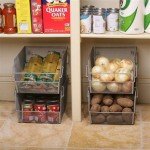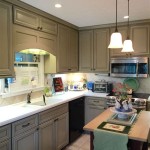Decorative Kitchen Plates For Wall Decor: A Comprehensive Guide
Decorative kitchen plates as wall decor offer a unique opportunity to personalize and enhance the aesthetic appeal of a kitchen space. Beyond their utilitarian function, these plates can serve as focal points, add color, texture, and reflect individual style and preferences. The versatility of decorative plates allows for a wide range of design approaches, from classic and traditional to modern and eclectic. This article will explore the various aspects of using decorative kitchen plates for wall decor, including design considerations, installation techniques, and maintenance tips.
Understanding the Appeal of Decorative Plates
The enduring popularity of decorative plates stems from several factors. Firstly, they provide a relatively inexpensive way to introduce art and design into a kitchen. Compared to paintings or sculptures, decorative plates are often more accessible and can be acquired gradually, building a collection over time. Secondly, they offer a high degree of customization. Plates come in an extensive array of materials, patterns, colors, and sizes, enabling homeowners to curate a display that perfectly complements their existing decor. Thirdly, decorative plates can possess sentimental value. Many people collect plates as souvenirs from travels or inherit them from family members, imbuing them with personal significance and creating a sense of history within the kitchen space.
Furthermore, the inherent shape and form of a plate lend themselves well to wall display. The circular or oval shape provides a defined visual boundary, making it easy to arrange and balance a group of plates. The smooth, often glossy, surface of a plate can also reflect light, adding brightness and dimension to the wall. In contrast to flat artwork, plates offer a subtle three-dimensionality that can be visually engaging.
Key Design Considerations
Successfully integrating decorative plates into a kitchen wall decor scheme requires careful planning and consideration of several key design elements. These elements include: plate selection, color palette coordination, arrangement and layout, scale and proportion, and contextual integration.
Plate Selection: The selection of plates should be guided by the overall aesthetic of the kitchen. For a traditional kitchen, consider plates with floral patterns, Chinoiserie designs, or antique motifs. For a modern kitchen, opt for plates with geometric patterns, abstract designs, or minimalist color schemes. The material of the plate can also influence the overall look. Porcelain plates offer a classic and elegant appearance, while ceramic plates can provide a more rustic or textured feel. Hand-painted plates add an artisanal touch, while mass-produced plates can offer a more affordable option.
Color Palette Coordination: The colors of the plates should complement the existing color palette of the kitchen. Consider the color of the walls, cabinets, countertops, and backsplash. Plates can either blend in with the existing color scheme or provide a pop of contrasting color. For example, in a kitchen with neutral walls, a collection of brightly colored plates can add visual interest and energy. Conversely, in a kitchen with bold walls, plates with muted colors can create a more calming and balanced effect.
Arrangement and Layout: The arrangement of the plates on the wall is crucial for creating a visually appealing display. There are several common arrangement strategies: symmetrical, asymmetrical, grid, and freeform. A symmetrical arrangement involves arranging plates in a balanced and mirrored fashion, creating a sense of formality and order. An asymmetrical arrangement involves arranging plates in an uneven and dynamic fashion, creating a sense of informality and spontaneity. A grid arrangement involves arranging plates in a regular grid pattern, creating a sense of structure and organization. A freeform arrangement involves arranging plates in a more organic and random fashion, creating a sense of creativity and individuality. The layout should also consider the size and shape of the plates, and the spacing between them.
Scale and Proportion: The size of the plates should be proportionate to the size of the wall. A small collection of plates can get lost on a large wall, while a large collection of plates can overwhelm a small wall. Consider using a variety of plate sizes to create visual interest. The arrangement of plates should also be proportionate to the other elements in the kitchen, such as cabinets, windows, and appliances.
Contextual Integration: The plates should be integrated into the overall context of the kitchen. Consider the style of the kitchen, the existing decor, and the personal preferences of the homeowner. The plates should complement the other elements in the kitchen and contribute to the overall aesthetic. Avoid selecting plates that clash with the existing decor or detract from the overall harmony of the space.
Materials and Installation Techniques
Proper installation is essential for ensuring that decorative plates are securely and safely displayed on the wall. Selecting the right mounting hardware and employing appropriate installation techniques are crucial for preventing damage to the plates and the wall.
Mounting Hardware Options: Several options are available for hanging decorative plates on the wall. These options include: plate hangers, adhesive discs, and custom-made mounting systems. Plate hangers are designed to grip the edge of the plate and provide a hook for hanging. They come in various sizes and styles to accommodate different plate sizes and weights. Adhesive discs are designed to attach directly to the back of the plate and adhere to the wall. They are a good option for lightweight plates, but may not be suitable for heavier plates or textured walls. Custom-made mounting systems are designed for specific types of plates and can provide a more secure and aesthetically pleasing solution. These systems may involve drilling holes in the plate or attaching a bracket to the back of the plate.
Wall Preparation: Before installing the plates, the wall should be properly prepared. Clean the wall surface to remove any dust or dirt. If the wall is painted, ensure that the paint is fully cured. If the wall is textured, consider using mounting hardware that is designed for textured surfaces. For heavy plates, it may be necessary to reinforce the wall with drywall anchors or studs. Use a level to ensure that the plates are hung straight and evenly spaced.
Installation Steps: The installation steps will vary depending on the type of mounting hardware used. For plate hangers, attach the hanger to the plate, ensuring that it is securely gripping the edge. Mark the desired location on the wall and drive a nail or screw into the wall. Hang the plate on the nail or screw. For adhesive discs, clean the back of the plate and attach the disc. Press the plate firmly against the wall for several seconds to ensure a secure bond. For custom-made mounting systems, follow the manufacturer's instructions carefully. Always test the stability of the plate before leaving it unattended.
Safety Considerations: When installing decorative plates, safety should be a primary concern. Ensure that the mounting hardware is appropriate for the weight of the plate and the type of wall. Avoid hanging plates in areas where they are likely to be bumped or knocked over. Use caution when working with tools and ladders. If you are unsure about any aspect of the installation process, consult with a professional.
Maintenance and Care
Once the decorative plates are installed, regular maintenance and care are necessary to keep them looking their best. This includes cleaning, dusting, and preventing damage.
Cleaning and Dusting: Dust the plates regularly with a soft cloth or duster. Avoid using harsh chemicals or abrasive cleaners, as these can damage the surface of the plate. For plates with intricate designs or textured surfaces, use a soft brush to remove dust from hard-to-reach areas. If the plates are dirty, wash them gently with mild soap and water. Rinse thoroughly and dry with a soft cloth.
Preventing Damage: To prevent damage to the plates, avoid placing them in direct sunlight or near sources of heat. These can cause the colors to fade or the plate to crack. Be careful when handling the plates, as they can be fragile. Avoid bumping them against other objects or dropping them. If a plate becomes chipped or cracked, repair it immediately to prevent further damage.
Seasonal Adjustments: Consider making seasonal adjustments to the plate display. For example, during the holidays, you could add plates with festive designs or colors. You could also rotate the plates periodically to keep the display fresh and interesting. This can also help to prevent fading or discoloration from prolonged exposure to sunlight.

Set Of 3 Wall Plates Decorative Ceramic Hanging Large Turkish Handmande Home Kitchen Decor Serving Desert Dinner Platter Gift Israel

13 Wall Plate Decor Ideas We Re Stealing From Instagram

32 Decorative Plate Ideas Creative Ways To Style Your Walls

Decorative Wall Plates Combo Set Of 4 Fruti D Italia

32 Decorative Plate Ideas Creative Ways To Style Your Walls

30 Eye Catchy Kitchen Wall Décor Ideas Digsdigs

Here S Proof Farmhouse Kitchens Are The Best

Wall Decorations Blue And White Dinner Plates Mismatched China Porcelain Dishes New Vintage Mix Match Kitchen Dining Room 9 11

Decorative Wall Plates French Country Kitchen Decor Piazza Pisano

Your Guide To Decorating With Plates Ang Decorates An Interior Design Blog
Related Posts

